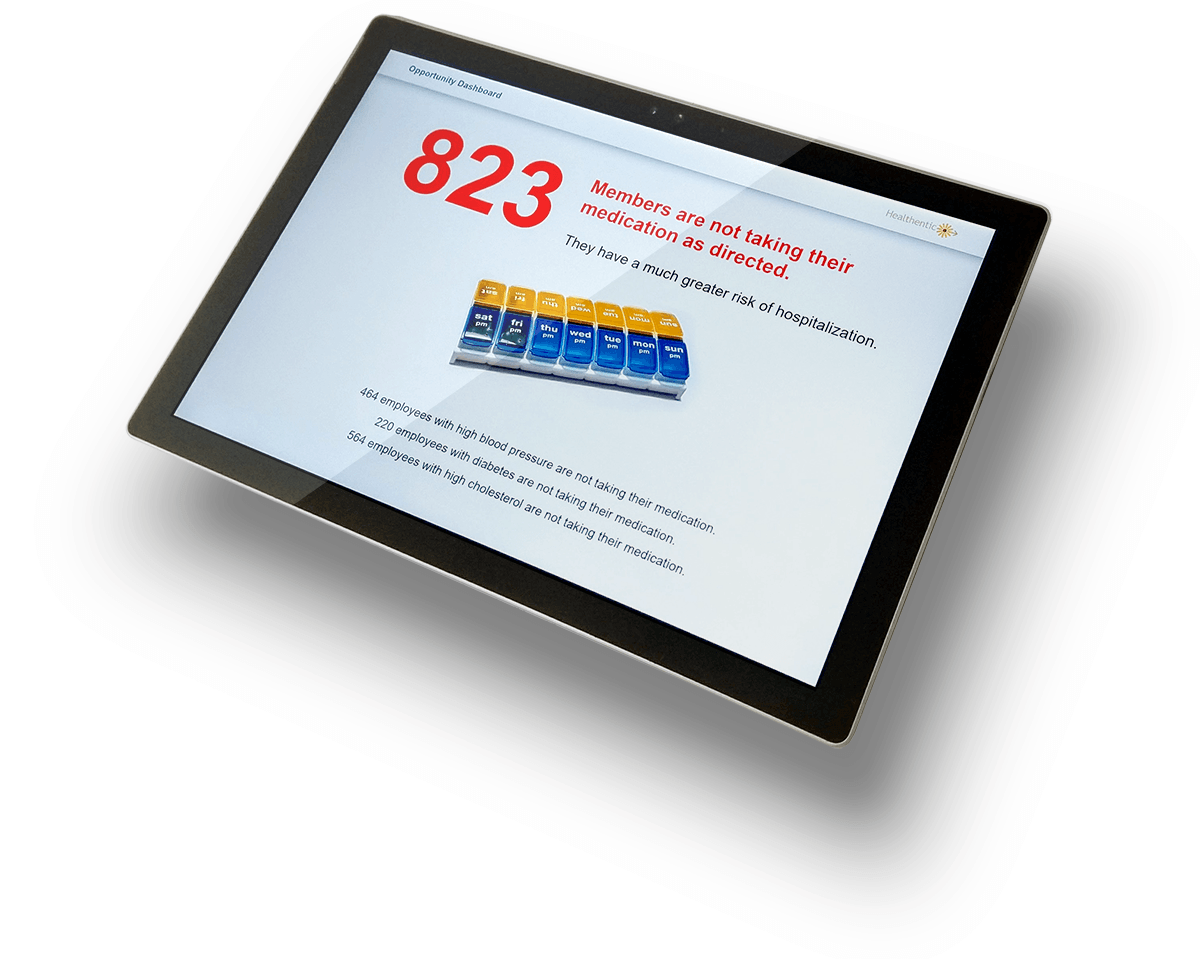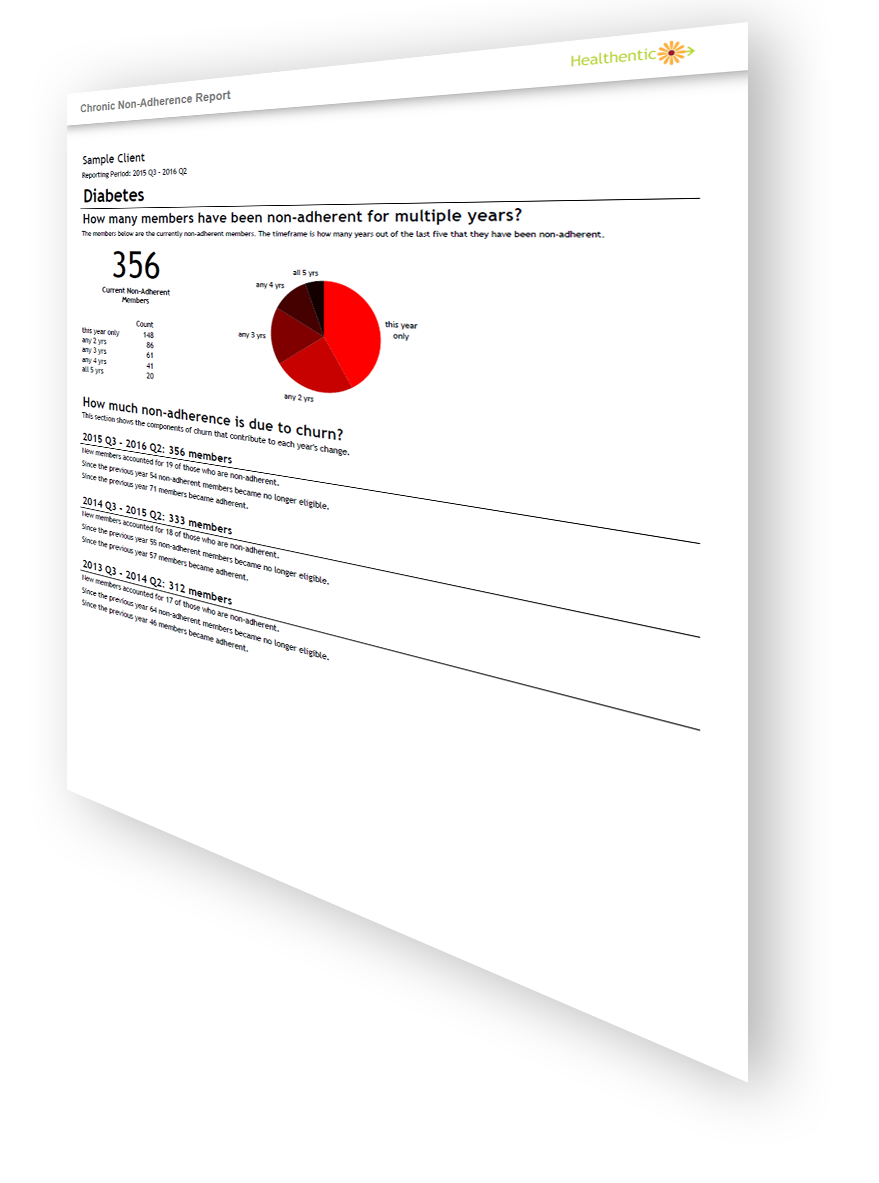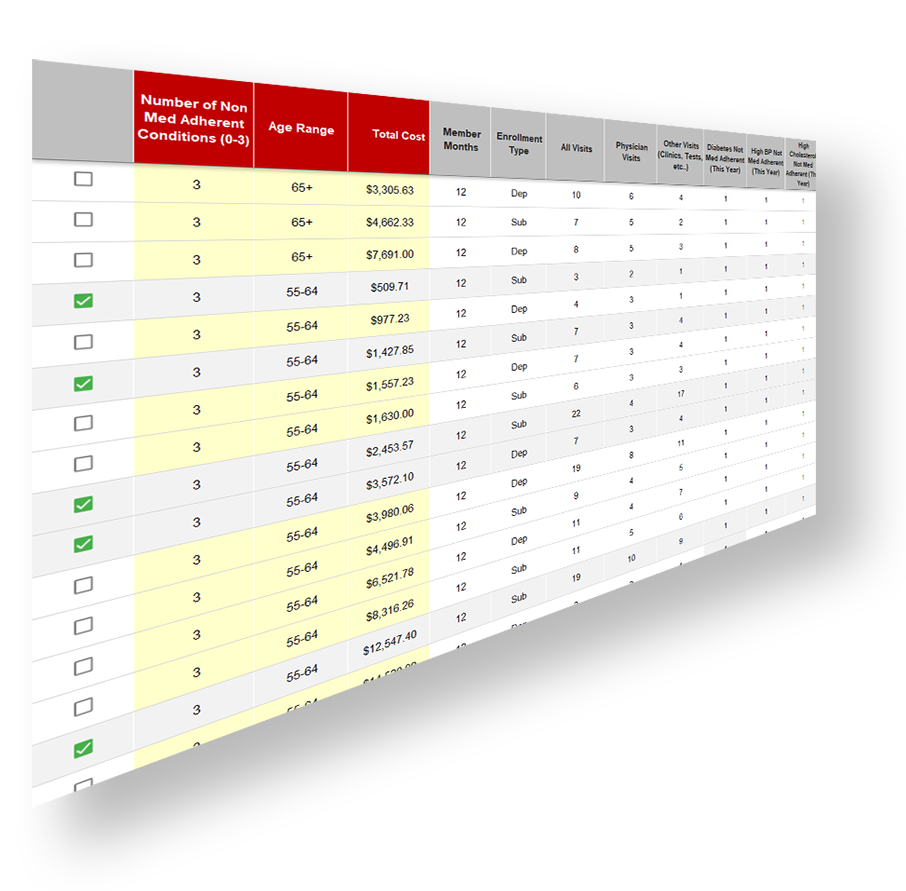Find “Ticking Time Bomb” Patients

My Role
- Research
- Algorithm Design
- Report Design
- Iterative Testing
Summary
Shows members not taking their medications for 2 or more of the last five years. These people are at higher risk.
Problem
Benefit Managers feel defeated. For years they have provided expensive and broad-scoped condition management programs and have little to show for it - plus their people often end up in the hospital for avoidable reasons.
According to a Department of Health and Human Services study, 5% of Americans made up 50% of U.S. health care spending. And the top 1%? They drove 20% of medical expenditures.
According to the February CDC Grand Rounds, 33%‒69% of hospital admissions are due to members not taking their medication as directed. The cost of not taking medication is estimated to be between $300-600 billion dollars annually.
Can employers find the members that are at-risk before they end up in the hospital?
Solution Overview
- Focus on four contributing factors to catastrophic and costly health events:
- Not taking medication as directed for multiple conditions and multiple years
- Low health care cost/consumption of services
- Age
- Report chronic medication non-adherence - over five years
- Provide a list of patients sorted by likelihood of bad outcomes
- Create cohorts of patients for outreach
- Measure outreach efforts and report to allow feedback to improve outreach
Process
- Define the problem: research the factors that are most correlated with steep increases in healthcare costs.
- Report on the issue in a way that is easy for HR teams to understand
- Develop a sortable list of at-risk patients
- Create a way to create and track cohorts
Identify the Chronically Non-Adherent
Shows members not taking their medications for 2 or more of the last five years. These people are at higher risk due to the length of time that they have been not compliant to their treatment.
Focus is on the individuals whose health risks increase year-over-year and need immediate attention.
List of At-Risk Patients
Provides PHI-blinded lists of people - employers can include additional identifiers for their unique situation. (e.g. exclude children or add everyone who has not seen a physician in three years.)
Shows “ticking time bombs” as well as actionable insights for thousands of risks
Actual data, not models


